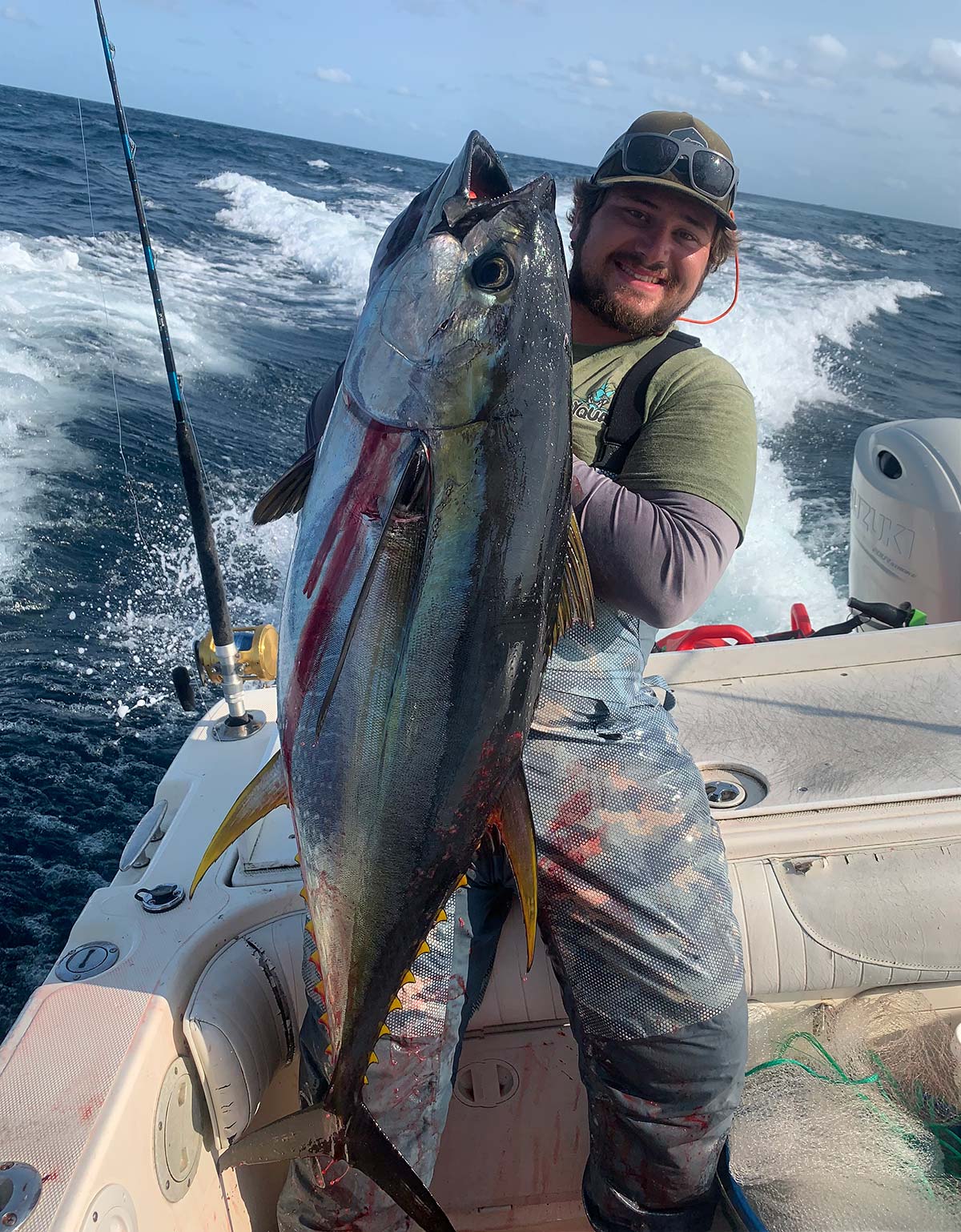
Tips on how to adapt to the chunk throughout the day.
With the onset of warm blue water flooding into our inshore and midshore grounds, yellowfin tuna begin to settle in along many of our inshore and midshore lumps. The bait that inhabits these areas provide an abundant food source that will allow these fish to stay put. Once this occurs, these fish can now be caught more ways than just trolling, and chunking can be one of the most exciting ways to do it.
There’s a science to this fishery, and a lot of varied components, but the first visual set of yellow sickles or runoff right out of your hands will make all the prep worth it.
First off, bait and chunks. Chunks are going to be the reason the tuna are drawn to your boat, and their quality and quantity are going to completely dictate how your day goes. Most tackle shops are fully stocked at the beginning of the season with the baits that offshore fisherman like to use, namely butterfish and sardines. These are purchased in flats, usually 45 pounds. If you see a weather window coming, especially on a weekend, buy them a few days early. Midsummer tuna bites can wipe a tackle shop out days before the weather window is here, so buy a few of each. Many days the fish will only eat both chunked up, but prefer one or the other as a hook bait. At a minimum, you should have one flat for every 90 minutes you plan on fishing.
Once you have these flats, start to thaw one flat of butterfish (butters) and one flat of sardines the day before. It pays off in dividends to have at least two flats precut into 1- to 1-1/2-inch chunks before you get on the grounds. The last thing you want to be doing is rushing to cut more chunks when you have the fish at the boat and rods going off. Once you’ve started to cut chunks, save about 15 to 20 pieces from each flat. Be very selective, as these will be your hook baits. Clear eyes, body fully intact with no skin missing; the body should be straight, not bent, and no freezer burn – these are all qualities of a good hook bait. Bag these and place them on ice. Keep in mind that if you try to let out a completely frozen bait and a tuna hits it, they will immediately drop it as it is rock solid.
Once you are on the grounds and fishing, keep changing baits out for fresh ones. There is no such thing as too fresh of a bait. If you are marking fish and noticing others hooking up, try fishing a chunk or cutting the bait in half to make it smaller. If you can’t get the fish to stay with the boat, try throwing more chunks, starting with three or four and going up from there.
My ideal chunking set up is a 20 or 30 class conventional filled with 65-pound Cortland Masterbraid followed by a top shot of 60-pound clear or camo mono, at least 100 feet in length. I follow this up with a small ball-bearing swivel, 100-pound size, and then 8 feet of 50-pound fluoro and a 3/0 ‘j’ or 4/0 circle hook. Hook size is totally dependent on the bait and should be sized up so that it can be hidden in the bait but the point is still exposed.
I fish at least four rods, two with no weight, one of which is constantly being let out, reeled in, and let out again. On the other two, one will have a 1- or 2-ounce weight, and the other with lightest weight I can get to the bottom. This is all to start. If I am marking fish or seeing others catch around me, my first move is dropping my leader size. Expect to do this. Most days, I start at 50 and quickly begin to drop to 30 or even 25 once the sun gets high in the sky. If I am still not getting bit, in addition to changing up baits I will also try different size weights, moving the weight farther from the bait by rubberbanding it onto the line. I may also start trying smaller hooks.
Chunking yellowfin can be exhilarating, and I have been very lucky to pick up these tricks both aboard the Hi Flier and Mushin Sportfishing at the Jersey Shore. Capt. Dave, my father, and the all-star lineup of captains put together by Capt. Alan Lee, always have another trick up their sleeve to get the bite. But these are some of the basics I have learned from working under all of them.
Not catching and not adapting go hand-in-hand; always be prepared!




